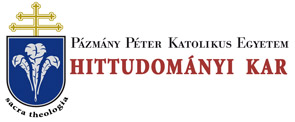Folia Theologica 16. (2005)
Pál Bolberitz: The Beginnings of Hungarian Philosphy (The Reception of Nicholas of Cusa in the work of "De homine" by Peter Monedulatus Csokas Laskoi)
22 P. BOLBERITZ grate neither to another man, nor to an animal, but it appears in front of God, that is where the resurrected Christ is found. According to him the blessed glorify and eulogize Lord and they have no duty of interceding. In the second volume of his work Laskoi writes about the construction of the human body, which will not be expounded hereby. Only as a curiosity I wish to quote from him - so that to let us have some concept about his style and observing ability - the following: "The part of the body in opposite to dorsum (human back) is called breast, which lies between the mamillas. It serves for accommodating heart and lungs as being widely spread over. So to avoid the strong skeleton of breast be appearing, the Creator has placed bosom on the breast, and in it occurs again the gift, which God has endowed man, for none of the animals have mamillas on its breast (as it seen in case of human being), except for the elephant."34 (Translated by the author.) Janos Erdélyi - who first endeavoured to outline the history of the Hungarian philosophy in 1857 - in his book titled as "The philosophy in Hungary"35 evaluates the work of Peter Monedolatus Csókás Laskoi as it follows: "Laskoi does not exhibit science, but initiates psychology. He is free from mystery, nevertheless his knowledge is surpassing what human mind is able to comprehend. He is rather theologist, than a philosopher. He refers to the Scripture (the Holy Bible); there he fails to find grounds for ceasing up to investigate the mystery of God. The mystery of God is truth, which occurs either in nature or in moral world." 1 think that principally we can accept Erdelyi's evaluation. Nevertheless 1 suppose - opposing to Erdélyi - that Laskoi is rather philosopher, than theologist (at least in this book of him). If we examine the Hungarian authors, preceeding him, it is definitely true - even if they had philosophized - that their writings are penetrated the ambiguity of the renaissance nature-mysticim, which is not proper for Laskoi. Though it is also true - but we cannot refer to it - that authors following him in chronological order, published works, more peculiar of phi34 LASKOI, „De homine” p. 421. 35 J., ERDELYI, Philosphy in Hungary, Budapest, 1885. Previous publ.: Cp. Sárospataki Füzetek, 1857.
